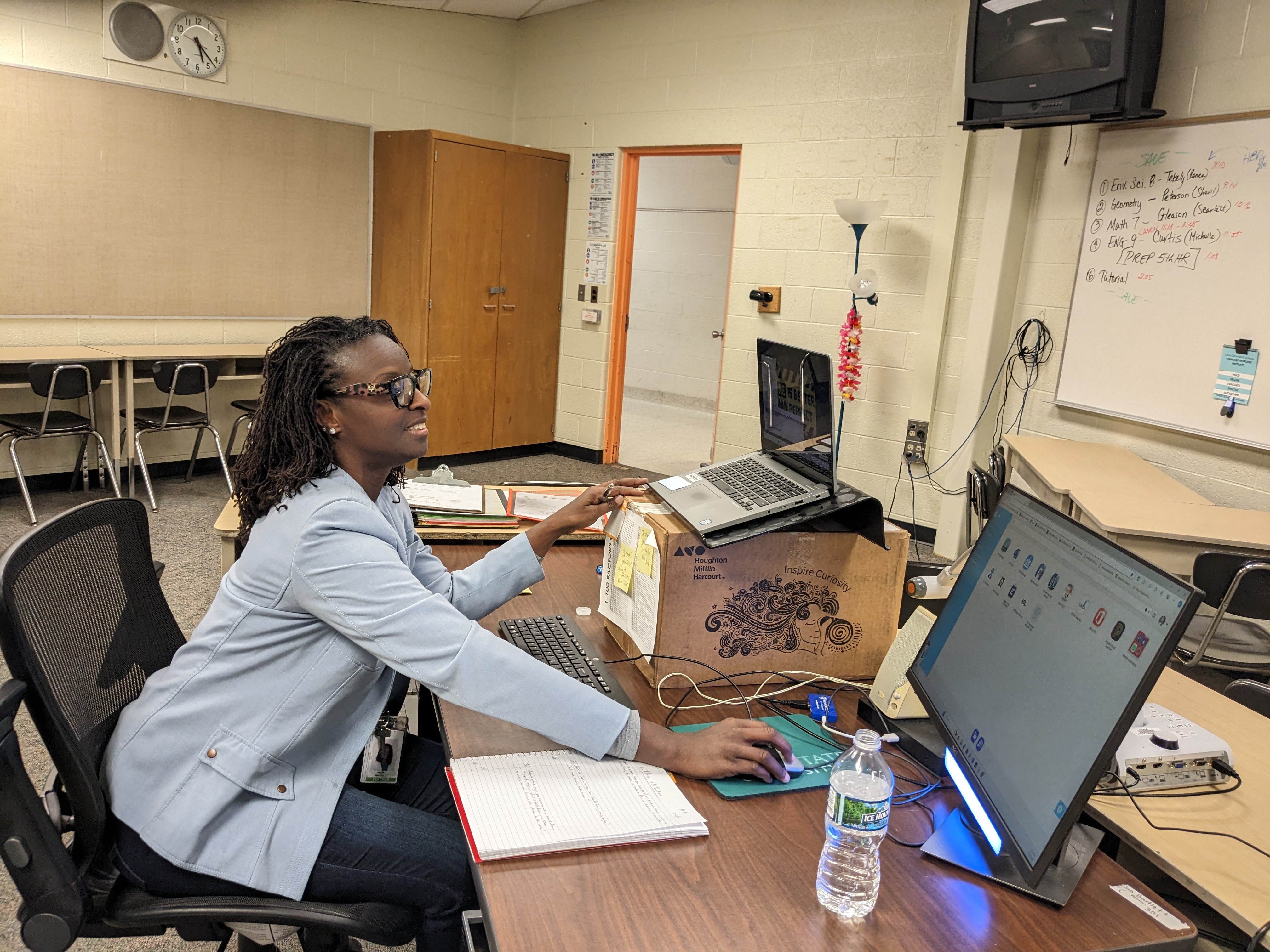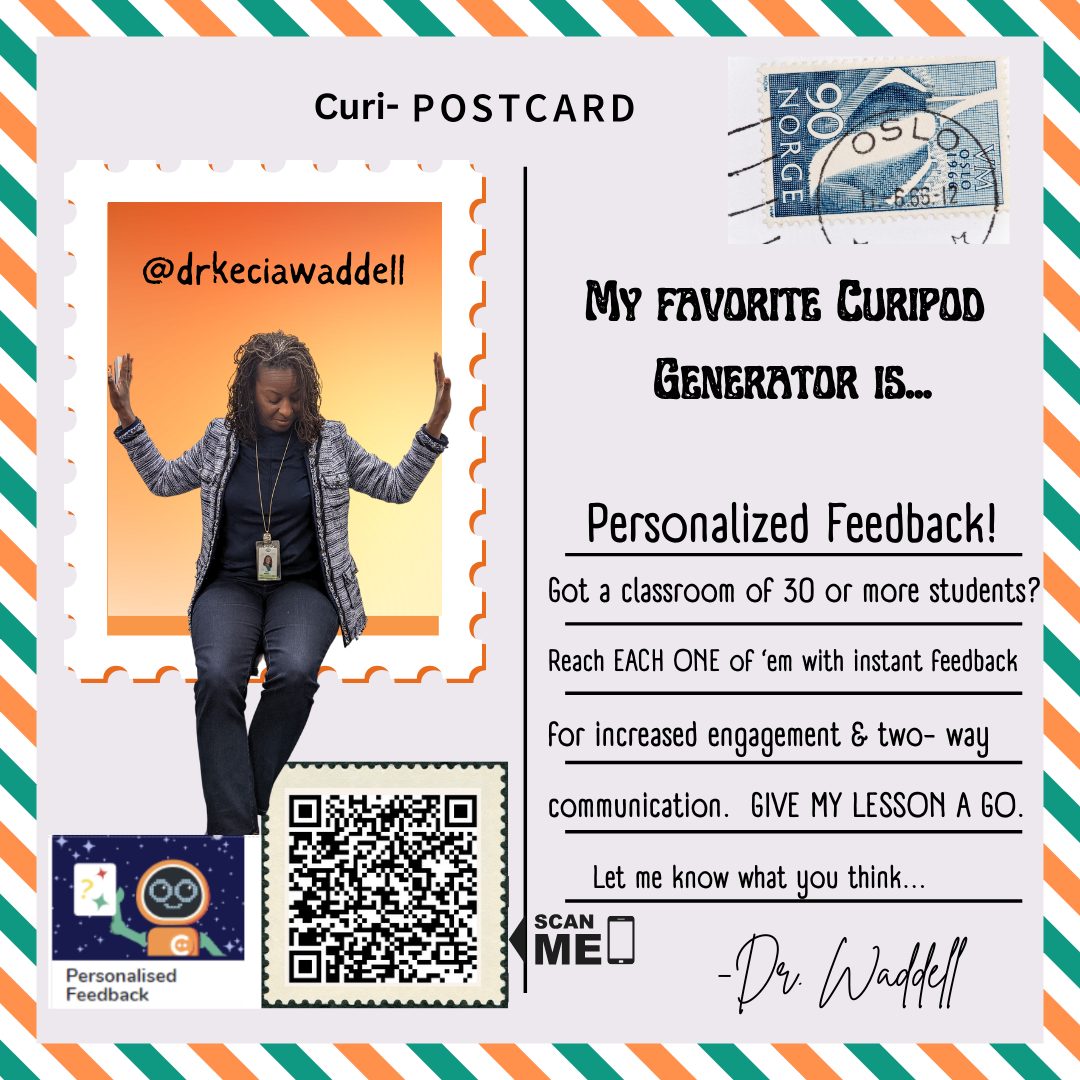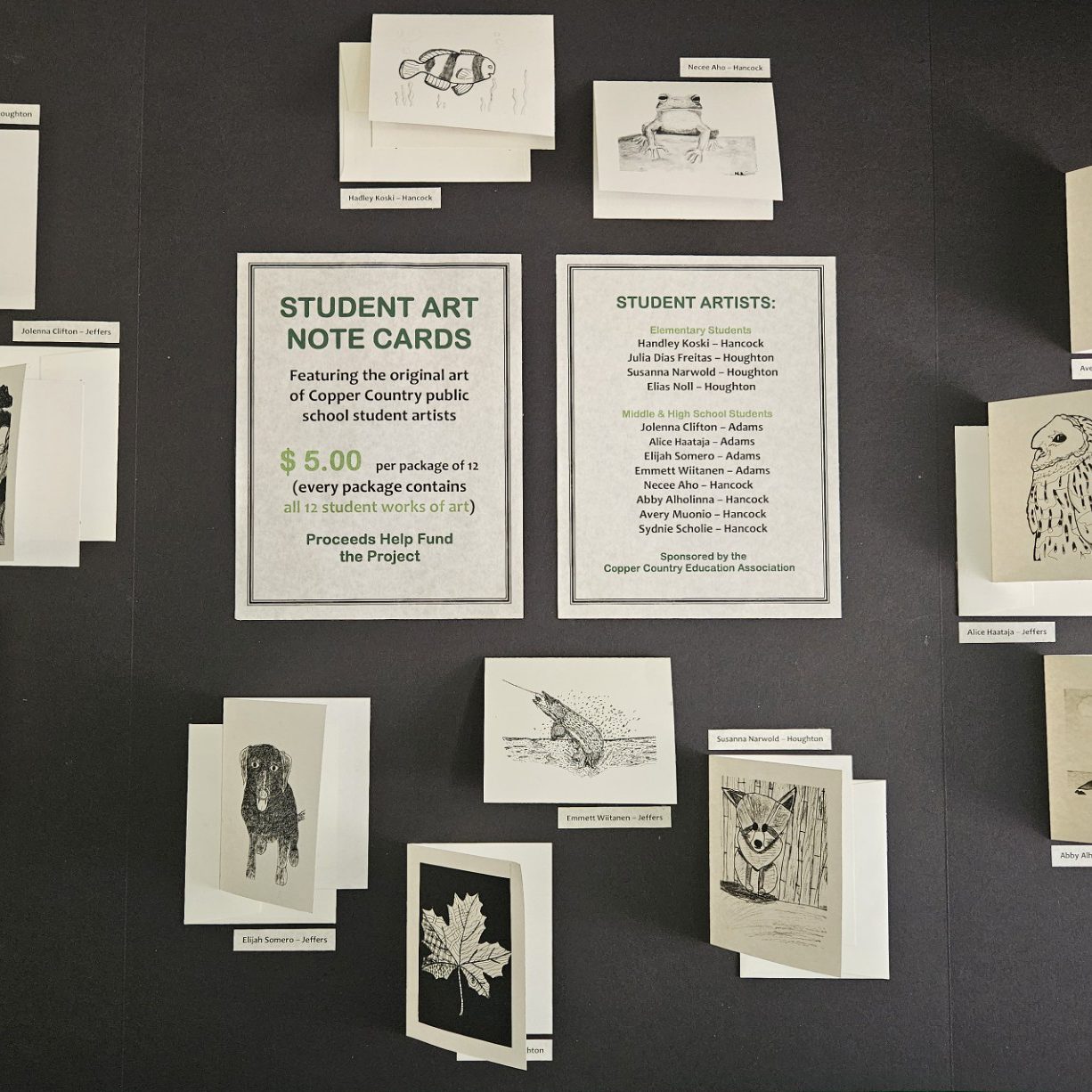Veteran educator: AI ‘democratizes education’
 MEA member Kecia Waddell began her career in the analog world, moved into digital, and will finish in the artificial intelligence age. A 30-year special education teacher in Utica, she couldn’t be more excited.
MEA member Kecia Waddell began her career in the analog world, moved into digital, and will finish in the artificial intelligence age. A 30-year special education teacher in Utica, she couldn’t be more excited.
“I’ve always integrated technology for transformative teaching and learning experiences for my students, but I’m so, so, so excited to have lived this long – 56 years – to be able to interface with technology of this magnitude that just absolutely democratizes education,” Waddell said.
Waddell refers to ChatGPT and similar AI applications as a “Swiss Army knife”: all-in-one tutor, guide, organizer, editor, assistant. “To me, it’s a tool to bring out higher function. We now have the tools for hyper personalization over one-size-fits-all. We’re public educators. We have to pull everybody in.”
She uses it to organize thoughts or write emails and for more cutting-edge tasks, such as giving students instant individualized feedback, connecting learning goals to student interests, and identifying personalized learning accommodations.
She brainstorms with AI, asking it to identify overlooked angles to a problem or solution – “like a dragnet to discover ideas or frameworks I’m not considering. I constantly stay in a mode of thinking divergently, so a tool like this is so empowering. It jump-starts thoughts.”
Waddell holds a master’s in special education from University of Detroit Mercy and both specialist certification and a doctorate in instructional technology from Wayne State University. She jumped to try ChatGPT upon its release 15 months ago and now subscribes to the plus version.
 Last year she incorporated AI with sophomores conducting research on high-interest topics to write essays through a chosen lens – for example, race, psychological, cultural norms. Students submitted source notes, and she uploaded their material for ChatGPT to organize as a thinking and writing aid.
Last year she incorporated AI with sophomores conducting research on high-interest topics to write essays through a chosen lens – for example, race, psychological, cultural norms. Students submitted source notes, and she uploaded their material for ChatGPT to organize as a thinking and writing aid.
“You’d be amazed how interesting the topic of lipstick becomes through the lens of environmental concerns,” she said. “It seems unlikely, but this is the brilliance of this approach with my students: Take high-interest subject matter plus academic research, add generative AI and Whoa! Deep engagement and ease in student comprehension.”
This year Waddell teaches middle school students in the district’s virtual academy where AI helps connect kids’ real lives to learning. For example, ChatGPT helped the veteran educator assist a girl she knew was a “Swiftie” struggling to learn symbolism – by using Taylor Swift song lyrics.
Platforms like Curipod and Magic School draw on AI to create presentations, design AI-proof assignments, and craft rubrics, among other tasks. But Waddell also uses ChatGPT directly by “training” the machine with content – it’s that easy, she says.
She excitedly discusses plans to consult in retirement to help educators empower students. “I want to be that person who teaches educators how to use this tool because everybody’s upskilling, reskilling, unlearning, relearning.”
Waddell understands concerns about cheating and fears of becoming obsolete but says cheating isn’t new and great educators bring more value than just content knowledge.
“Educators think. We create. We problem-solve. I need my colleagues to learn how to use this tool to solve real problems we face, with the constraints we have, and allow what (theorist Lev) Vygotsky calls ‘the more knowledgeable other’ to help us fill those gaps.”

RELATED STORIES
Get ready—AI is transformative: ‘We have to focus on the speed of change’
CMU prof: ‘We can do this. We have to.’
SVSU profs: AI can boost creativity



